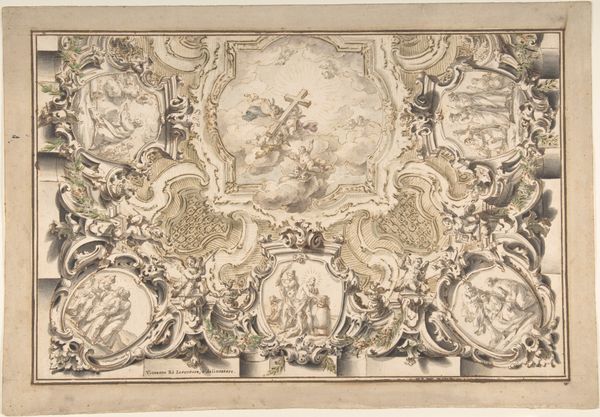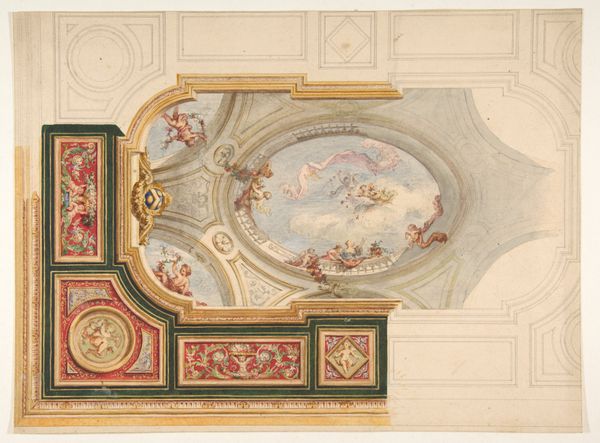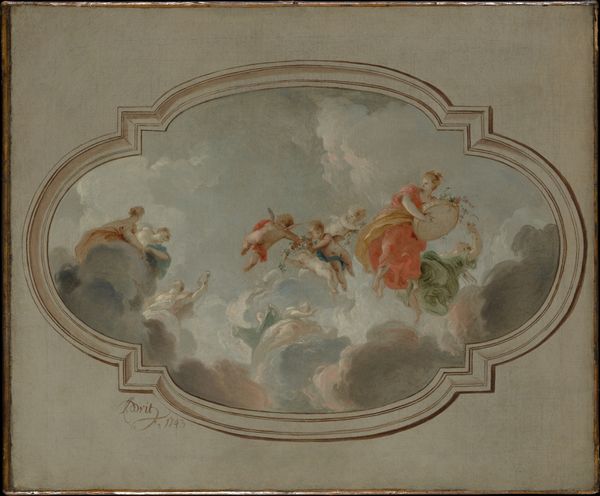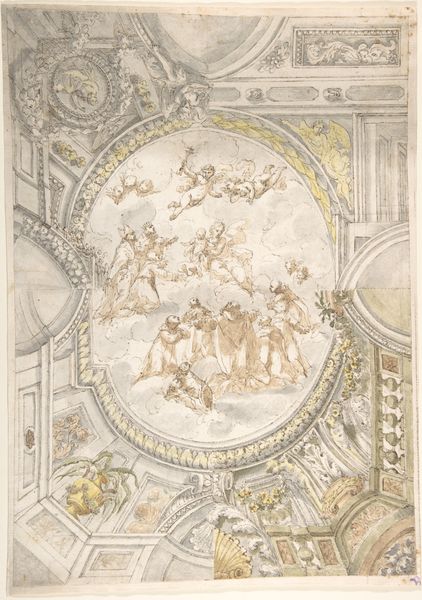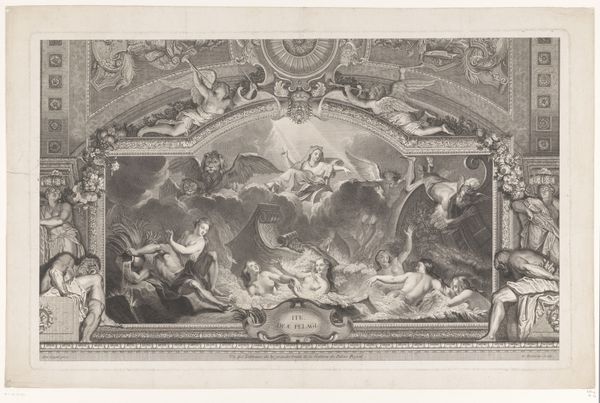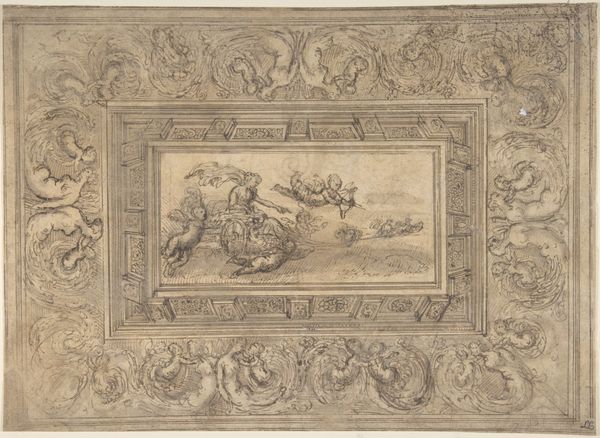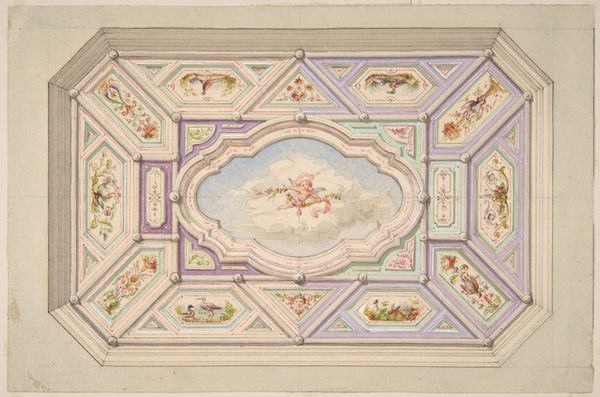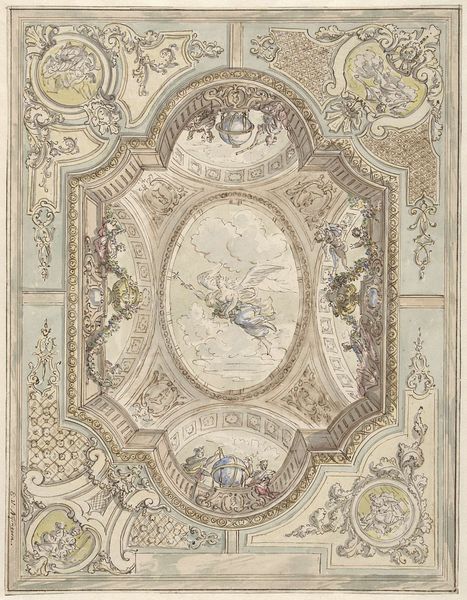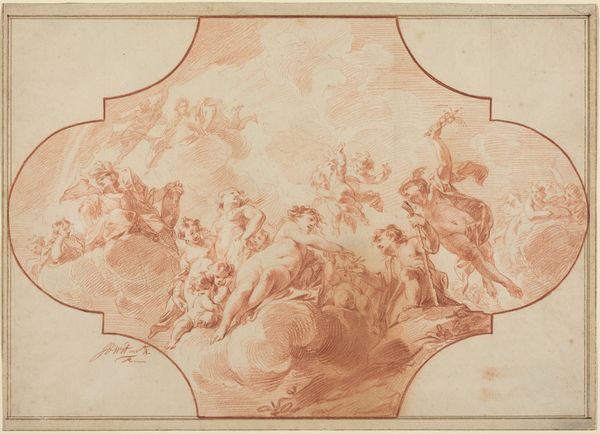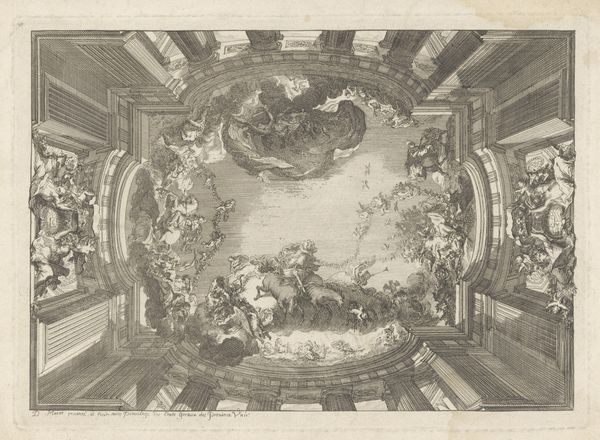
drawing, print, watercolor
#
drawing
#
water colours
#
allegory
#
baroque
# print
#
watercolor
#
men
#
watercolour illustration
#
history-painting
#
watercolor
Dimensions: 12 7/16 x 18 7/8 in. (31.6 x 47.9 cm)
Copyright: Public Domain
Curator: This watercolor, "Design for a Ceiling" by Daniel Marot the Elder, made between 1707 and 1717, presents an ornate, baroque vision. Editor: My first thought is—dizzying! In a good way. The swirling figures, soft palette, and the perspective play tricks on your eyes. You can almost feel yourself tilting back to take it all in. Curator: Right, and consider the production of these grand interiors. Marot wasn't just an artist, but also a designer and engraver. This ceiling design, realized in watercolor, would eventually inform the labor of many artisans: plasterers, painters, sculptors, all contributing to a unified, if hierarchical, decorative scheme. Editor: Absolutely. And those hierarchies are so embedded here. Who gets to *look* up at this ceiling, right? The artwork speaks volumes about power structures, class, and the construction of identity within privileged spaces. The visual language of baroque art served to reinforce and naturalize such social orders. Curator: Precisely. Think of the material investment: costly pigments, the highly skilled labor to execute it. This was all financed by a specific segment of society to communicate prestige. Beyond the allegory, the very existence of this piece testifies to particular relations of production. Editor: It makes you wonder about the individuals, perhaps even women, who worked on these immense projects—the anonymous craftspeople behind the gilded frames, the intricate plasterwork. How their stories intersect, or don't, with this grand, sweeping vision is compelling. Curator: And understanding those conditions really reframes the way we appreciate the artistry itself. The sublime, yes, but also the material realities underpinning its creation and its function in its time. Editor: Seeing this drawing today encourages a layered understanding of not only baroque artistry, but also its enduring echoes within social history. Curator: I agree completely. Considering this work, through material means helps clarify the relationship between artistic production and society. Editor: By seeing this through the context of art history we can deepen our knowledge of intersectionality.
Comments
No comments
Be the first to comment and join the conversation on the ultimate creative platform.
